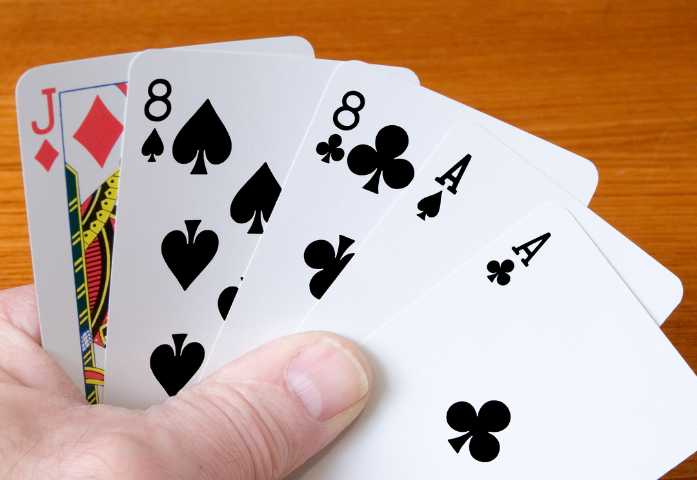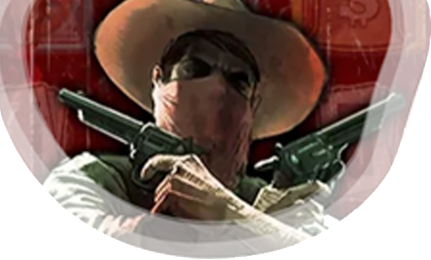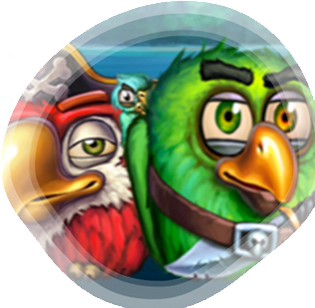May 10, 2022
What Is the Dead Man’s Hand in Poker?

- The Dead Man’s Hand refers to a hand with two Aces and two 8s or an Ace and an 8.
- This nickname comes from the 1876 murder of gunslinger and poker extraordinaire “Wild Bill” Hickok.
- The Dead Man’s Hand isn’t a great hand, but it’s a good hand for bluffing and can even be lucky if you get more Aces and 8s on the table.
There are many notorious poker hands from history that have fascinating backstories and equally fascinating monikers. One of those hands is known as the Dead Man’s Hand, which is a nickname for a hand containing Aces and 8s. While the story of this hand dates back to the 1870s, it wasn’t until the 1920s that people even paid attention to Aces and 8s as a poker symbol.
Let’s explore the legend behind the Dead Man’s Hand, the card combinations that used to bear this nickname, and some tips for how to play Aces and 8s when you’re dealt the Dead Man’s Hand.
What Is the Dead Man’s Hand?
Today, the Dead Man’s Hand refers to when a player is dealt an Ace and an 8 in two-card poker or two Aces and two 8s in a five-card version of the game. Sticking with the legend we’ll discuss in a moment, a true Dead Man’s Hand would be two black Aces and two black 8s (so two spades and two clubs). This is the hand Wild Bill Hickok was supposedly holding when he met his grisly demise in the mid-19th century.
Before this hand took up the moniker, the Dead Man’s Hand was actually used to describe a few other potentially superstitious hands. Jacks and 8s, Jacks and 7s, and a Full House with Jacks Over 10s were all once referred to as “the Dead Man’s Hand.” But in the 1920s, word of Wild Bill’s legendary poker death sparked the poker community’s imagination, and Aces and 8s became the official Dead Man’s Hand.
The Dead Man Behind the Legendary Hand
On August 2, 1876, James Butler “Wild Bill” Hickok was playing five-card stud poker at the Nuttal & Mann’s Saloon in Deadwood, a town in the Dakota territory that would eventually become South Dakota. Wild Bill was a bit of a legend even in his time because he was an excellent marksman, a professional gunslinger, a rugged lawman, and an actor. Wild Bill was also known for being fantastic at poker, a game still in its infancy at the time.
It was on this day that another man called Jack McCall came up behind Wild Bill and shot him right in the back of the head, killing him instantly. The legend says that Wild Bill was in the middle of a hand and had been dealt two black Aces and two black 8s, but the fifth card was unknown (and still is to this day).
Why did McCall kill Wild Bill? Well, the story goes that McCall and Wild Bill had been playing poker the night before. McCall was drunk and losing badly to Wild Bill, who encouraged McCall to stop playing and sober up for the night. Wild Bill gave him some money to buy food, which apparently insulted McCall.
Typically, Wild Bill would sit with his back to the wall and face the room while he played, fearing his reputation as a lawman would catch up with him and lead to someone shooting him from behind. But on this day, there was no such seat available to him, so he sat with his back to the room. The rest is history.
McCall would initially say that he killed Wild Bill to get revenge on him for his dead brother whom he said was murdered by Wild Bill. McCall was later found guilty of murder and hanged.
Not only is this hand famous in the poker world — the character of Wild Bill Hickok and the scene of his demise has been portrayed many times in film and TV. Wild Bill has been portrayed by many famous actors, including Roy Rogers, Jeff Bridges, and Sam Elliot. His life and death were even featured in HBO’s Deadwood.
How To Play the Dead Man’s Hand in Poker
Even though the name “Dead Man’s Hand” may seem like a bad omen, there really isn’t much of a poker superstition attached to the name. So if you’re dealt Aces and 8s, you don’t have to worry about meeting any harsh fate. But you should know how to play the hand properly to make the most of these ominous cards.
Overall, being dealt an A-8 isn’t great, even when you’re handed another Ace and 8 on the flop, turn, or river. That’s because there are many other hands that could beat you, such as a three of a kind, a straight, or a full house. That’s what makes it so important to watch the other cards that hit the table and pay attention to how others are playing.
If you’re dealt an Ace and an 8 when playing Texas Hold ’em, you have a few options that depend on your position in the hand and your play style.
Let’s say you’re in the button seat (so you’re the last to bet). You might consider calling to see the flop, meaning you’ll only lose the initial ante if you end up folding after. If you’re an ambitious player, you might even consider raising to bluff the others out of the blinds and antes. To play it safe, you could just fold this hand, which is often best when you’ve got a lot of chips or other players have raised before the flop or after a flop that gives you no additional help.
What you do after the flop depends on the cards on the table. If you’ve been granted a community Ace, you might be in a good spot to call — but be wary of that weak 8; someone could have a 9 or higher with their Ace and beat you out. You could also raise to bluff out a passive player when there’s nothing on the table that everyone could share, like a pair.
Now, if the flop reveals another Ace and another 8, you could call and see the hand through, raise to weed out the weak hands or entice the confident players, or fold. Why fold, you ask? There are so many other hands that could beat you, so think about what the community cards are, how the other players are betting, and what could be around the turn and river.
Don’t be afraid of the Dead Man’s Hand, but don’t think of it as a game saver either. While there are many ways to play it smart, there are many factors that could influence your ability to win with that hand. When you’re ready, check out our reviews for online casinos in New Jersey to find the bonuses and online poker gameplay you’re looking for.



